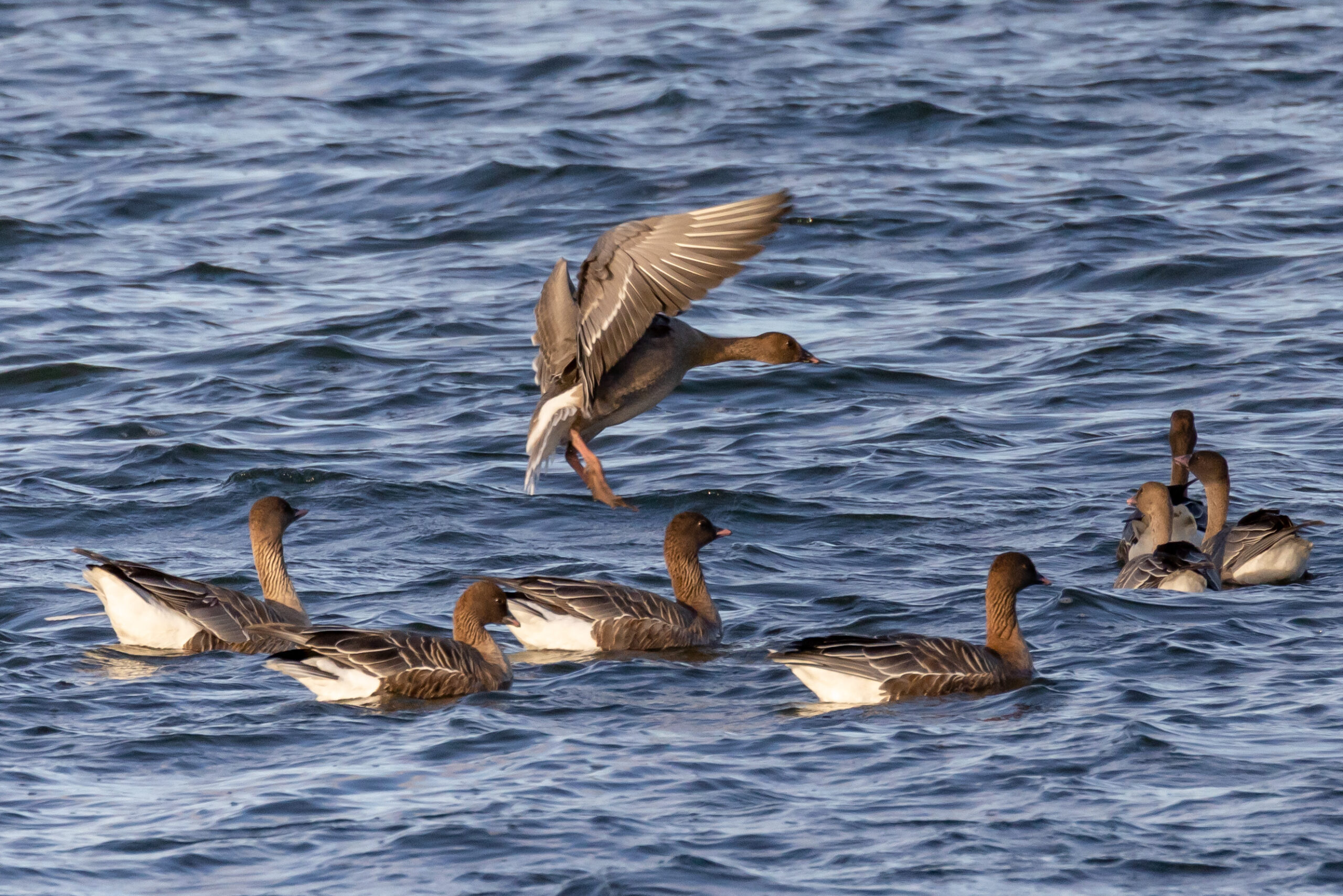Pink-footed Goose FAQ
We’re right in the midst of pink-footed goose season at Montrose Basin now, and we’ve been so busy (with geese and visitors) that we haven’t had a chance to keep our blog posts updated with how the numbers have been going this year!
We’ve found there are questions we’re happily answering on a daily basis at the visitor centre regarding our pink-footed geese (or ‘pinkies’ as you may find the Montrose Basin team affectionately calling them). So we thought we’d compile them into a handy FAQ list for people to refer to. But first: let’s quickly review 2022’s pink-footed geese figures so far. You can always follow our Facebook and Twitter for more up-to-date numbers.
2022’s Pink-footed Geese at Montrose Basin
The geese arrived on 13th September this year, which is quite often the date they seem to choose. Numbers have been gradually building since then, although we haven’t had the massive peak of ~80,000 like previous years. Luckily this isn’t due to avian flu. It’s worth remembering our goose counts are always just a snapshot of numbers. Because the geese use the Basin as a stop-off point, they’re constantly moving through as they head further south to England. The numbers have felt quite average just from daily observation, even though the counts so far haven’t reflected that.
Our peak so far this year was 37,224 on Saturday 15th October. Our volunteer goose counting team will be out again this Sunday for the Icelandic Goose Census.

FAQ
When do the pink-footed geese arrive at Montrose Basin?
The geese usually begin arriving in mid-September, but this date can vary depending on the weather.
Where do the pink-footed geese come from, and where do they migrate to?
The pink-footed geese we get in the UK are from the Icelandic population. The Icelandic Pink-footed Goose population breed in Iceland and Greenland, and migrate to the UK in autumn for the winter. Their migration doesn’t stop in Scotland: many pink-footed geese continue to move further south as the season progresses, to areas in England like Norfolk.
How long do the pink-footed geese stay in Montrose for?
They arrive in mid-September, and we usually get our peak numbers in mid-October. From early November, lots of the pink-footed geese start to move further south. But around 10,000 pinkies will overwinter at Montrose Basin, and migrate back to Iceland and Greenland in early Spring (around April).
When and where are they best seen from?
Mid-October is when you’ll typically see the largest numbers of geese at Montrose. Their daily routine is as follows: in the morning just after sunrise they take off from the Basin to feed in surrounding fields around Angus, then as the light begins to fade around sunset, they fly back to the Basin to roost overnight. So the best time to see the geese is at dawn and dusk. The east side of the reserve gives you the best views of where the geese roost. The Tayock walk is particularly good at sunset. A map can be found here.
How many pink-footed geese does Montrose Basin get?
The Icelandic pink-footed goose population is now around the 500,000 mark, and a big proportion of these pass through Montrose Basin on their migration to the UK. The most we’ve ever had on the reserve at one time was 90,000 in 2016, but numbers have often exceeded 70,000 in other years.
How do you count all those geese?!
This is perhaps our most frequently asked question!
There are couple different types of ‘goose count’ we do at Montrose Basin. One is an estimate done by the ranger at dawn just before the geese take off for the day. Our ranger has become very experienced in counting geese (and other birds) and is able to look at a group and estimate the number based on the size. Once you’ve got an eye for what ‘a thousand geese’ looks like, it’s really not so bad…
Our other method is a bit more accurate (although you’d be surprised how close the ranger estimates usually are to the real number). We have a group of volunteer goose counters who work together to count the geese a few times a year, like for the Iceland Goose Census. Each volunteer is given a ‘zone’ of the Basin. The count begins before sunrise, and the geese are counted as they take off from the Basin and fly over a counter’s ‘zone’. This means geese aren’t double-counted. All the zones are then added together, which gives you accurate numbers such as this year’s 37,224!
Help protect Scotland’s wildlife
Our work to save Scotland’s wildlife is made possible thanks to the generosity of our members and supporters.
Join today from just £4 a month to help protect the species you love.
Preface
We’re right in the midst of pink-footed goose season at Montrose Basin now, and we’ve been so busy (with geese and visitors) that we haven’t had a chance to keep our …
